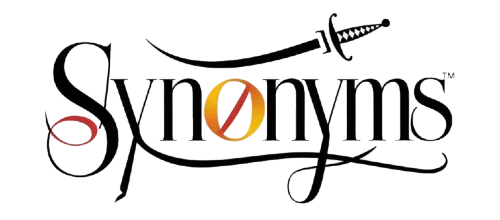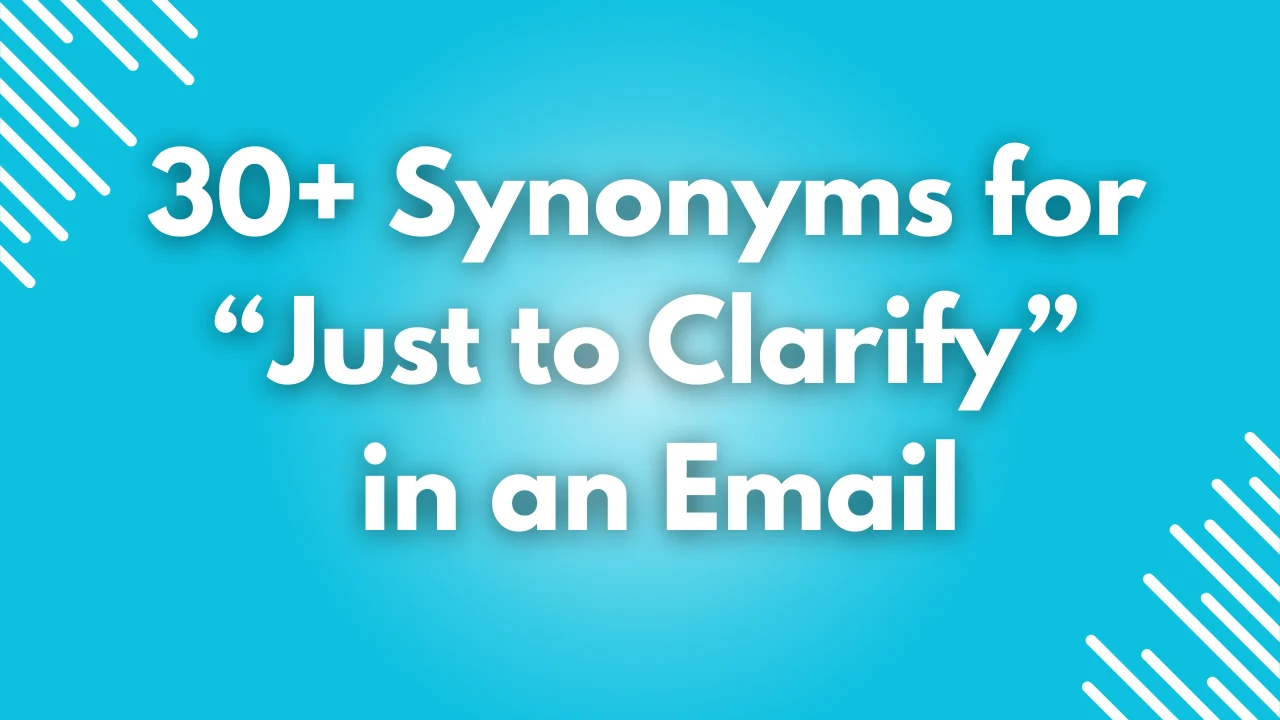The phrase “just to clarify” is one of the most common expressions in professional communication. It’s polite, straightforward, and shows you’re aiming for understanding rather than confrontation. However, when used repeatedly in emails or messages, it can sound slightly repetitive or overly formal.
Finding natural, professional alternatives helps your writing feel more refined and personable—while still keeping your tone clear and respectful. Whether you’re following up with a colleague, confirming project details, or preventing misunderstandings, choosing the right synonym can make your message sound both confident and courteous.
In this guide, you’ll discover 30+ polished alternatives to “just to clarify”, complete with meanings, tones, and examples, so you can communicate effectively in any professional context.
What Does “Just to Clarify” Mean?
The phrase “just to clarify” is used to ensure that both parties share the same understanding of a topic or instruction. It’s a diplomatic way to ask for or provide clarification without sounding accusatory or critical.
Example:
Just to clarify, the meeting will start at 10 a.m., right?
The tone is neutral and polite, which makes it perfect for business, academic, or professional settings.
When to Use It
You can use “just to clarify” when:
- You want to confirm information or avoid miscommunication.
- You’re rephrasing something for better understanding.
- You’re following up on a discussion or email chain.
Examples:
- Just to clarify, will the report include last quarter’s metrics?
- Just to clarify, you meant the updated version, correct?
It’s ideal for emails, meetings, and follow-ups—but replacing it occasionally helps you maintain a fresh and natural tone.
Is It Polite or Professional?
Yes — “just to clarify” is perfectly polite and professional. However, if you use it too often, it might come across as overly cautious or hesitant.
To sound more confident and natural, use alternatives that fit the level of formality or tone you want—whether friendly, diplomatic, or authoritative.
30+ Other Ways to Say “Just to Clarify” in an Email
Below are alternatives categorized by tone and context — from formal to friendly.
🔹 Professional & Neutral Alternatives
- To Confirm
Meaning: To verify or validate details.
Example: To confirm, the submission deadline is this Friday, correct?
Use: Concise and professional for most emails.
- To Make Sure We’re on the Same Page
Meaning: Ensures mutual understanding.
Example: To make sure we’re on the same page, the campaign starts next Monday, right?
Use: Friendly, clear, and collaborative tone.
- For Clarity
Meaning: Indicates you’re restating something to remove ambiguity.
Example: For clarity, the changes apply only to new clients.
Use: Formal and succinct.
- To Avoid Any Misunderstanding
Meaning: Emphasizes careful communication.
Example: To avoid any misunderstanding, could you confirm which version we’re using?
Use: Polite and diplomatic.
- To Ensure Accuracy
Meaning: Focuses on correctness and precision.
Example: To ensure accuracy, I’ll need to verify the final figures.
Use: Great for reports, documentation, or client communication.
- For the Sake of Clarity
Meaning: Slightly more formal version of “for clarity.”
Example: For the sake of clarity, let’s summarize the next steps.
- Just to Be Sure
Meaning: Gentle way to double-check information.
Example: Just to be sure, did you mean the updated proposal or the old one?
Use: Conversational yet polite.
- To Reiterate
Meaning: To repeat or emphasize an important point.
Example: To reiterate, the final draft is due by Tuesday.
Use: Works well in formal or leadership emails.
- To Verify
Meaning: To confirm factual details.
Example: To verify, have all approvals been received?
Use: Crisp, technical, and professional.
- To Restate
Meaning: Rephrases information for emphasis or clarity.
Example: To restate, the client review happens on Wednesday.
Use: Best for summaries or clarification emails.
🔹 Formal & Diplomatic Alternatives
- To Clarify Further
Meaning: Expands or specifies information.
Example: To clarify further, this applies only to international orders.
- To Avoid Confusion
Meaning: Prevents misinterpretation politely.
Example: To avoid confusion, the updated file is labeled “Final v3.”
- For Transparency
Meaning: Emphasizes openness in communication.
Example: For transparency, here’s the full breakdown of costs.
- Allow Me to Clarify
Meaning: Formal way to re-explain politely.
Example: Allow me to clarify the next steps regarding the partnership.
- To Elaborate
Meaning: To add explanation or detail.
Example: To elaborate, the new process will reduce turnaround time.
- To Specify
Meaning: Provides exact details to reduce ambiguity.
Example: To specify, the changes apply starting next quarter.
- To Make Things Clear
Meaning: Simplifies complex information.
Example: To make things clear, the budget covers only marketing expenses.
- To Summarize
Meaning: Polite way to restate key points for clarity.
Example: To summarize, the main deliverables are due by next Friday.
- To Ensure Understanding
Meaning: Emphasizes mutual comprehension.
Example: To ensure understanding, the process requires manager approval first.
- For Precision
Meaning: Focused on exactness and detail.
Example: For precision, could you confirm the client’s correct title?
🔹 Friendly & Conversational Alternatives
- Just Making Sure
Meaning: Informal way to verify understanding.
Example: Just making sure you received the latest file.
- I Want to Double-Check
Meaning: Emphasizes care and accuracy.
Example: I just want to double-check—are we meeting at 3 p.m.?
- Quick Check
Meaning: Suggests efficiency and light tone.
Example: Quick check—did the invoice go through?
- Wanted to Ensure
Meaning: Balanced and professional.
Example: I wanted to ensure you had the correct link.
- Just Confirming
Meaning: Soft, polite, and efficient.
Example: Just confirming that you’re attending tomorrow’s call.
- To Touch Base On
Meaning: Means “to follow up” or “reconnect.”
Example: To touch base on our previous conversation, have we finalized the dates?
- To Double-Confirm
Meaning: Reaffirms for certainty.
Example: To double-confirm, are both teams aligned on the deliverables?
- As a Quick Clarification
Meaning: Natural way to ensure clarity.
Example: As a quick clarification, did you want this report weekly or monthly?
- Just Making It Clear
Meaning: Friendly way to prevent confusion.
Example: Just making it clear—the file labeled “draft” isn’t the final version.
- Wanted to Reconfirm
Meaning: A polite way to ensure shared understanding.
Example: I wanted to reconfirm that the presentation deck is final.
- So We’re Aligned
Meaning: Ensures shared understanding and collaboration.
Example: So we’re aligned, the client meeting is at 2 p.m. EST.
Use: Modern and teamwork-oriented.
Conclusion
“Just to clarify” is an excellent expression for maintaining professionalism, but varying your language helps you sound more confident, precise, and polished. These 30+ alternatives allow you to adapt your tone—whether you’re writing to clients, colleagues, or supervisors. From formal phrases like “to ensure accuracy” to friendly ones like “just confirming,” these options make your communication clear and effective.
Use them thoughtfully, and your emails will reflect both professional confidence and linguistic variety.



